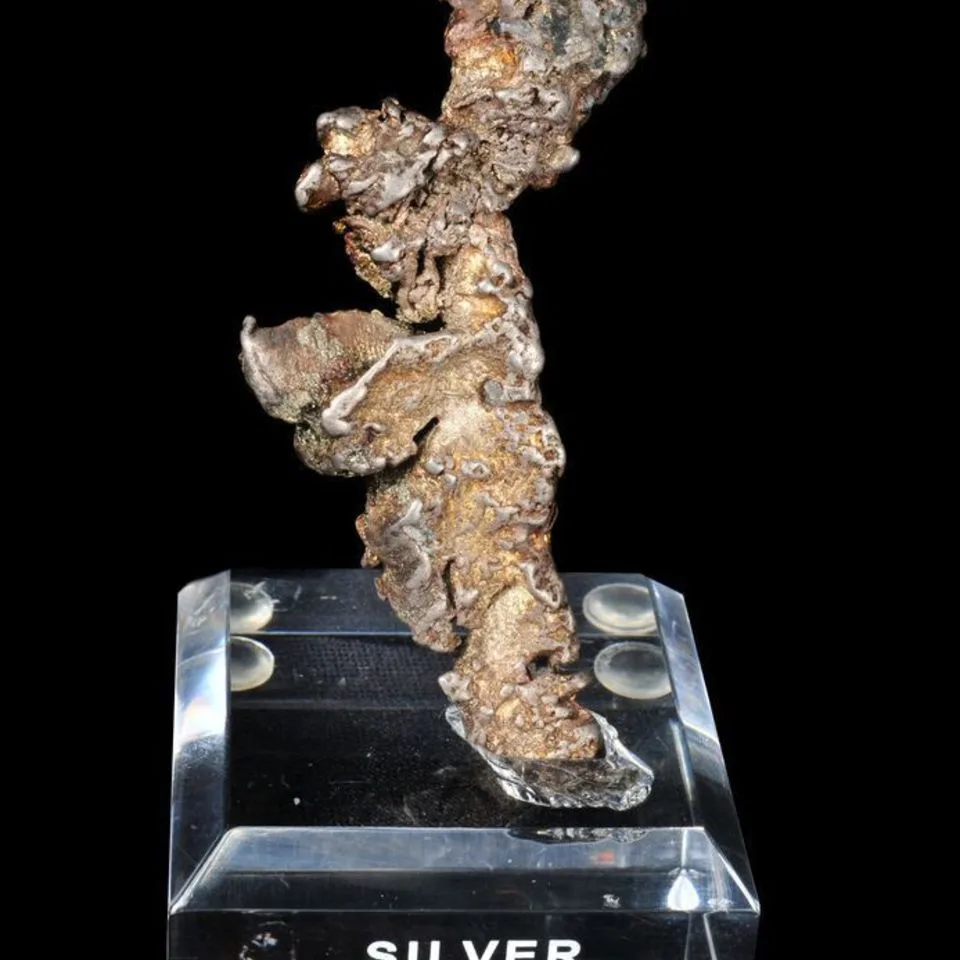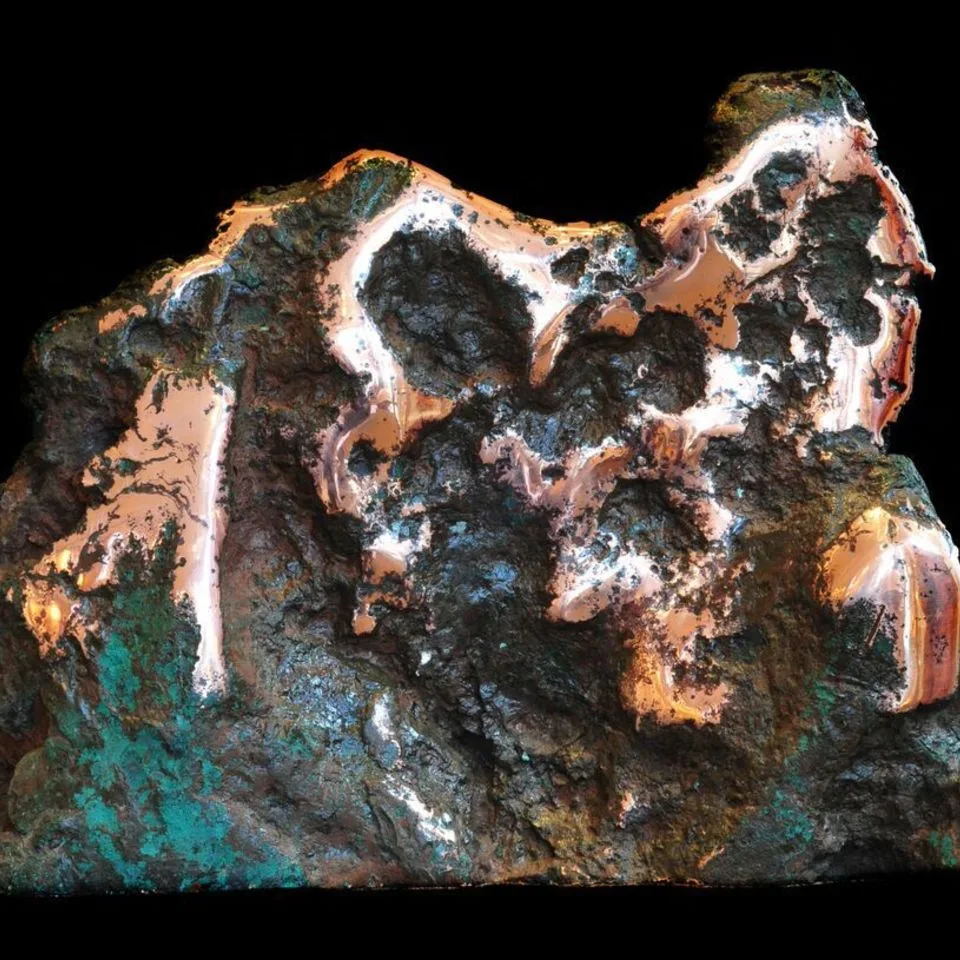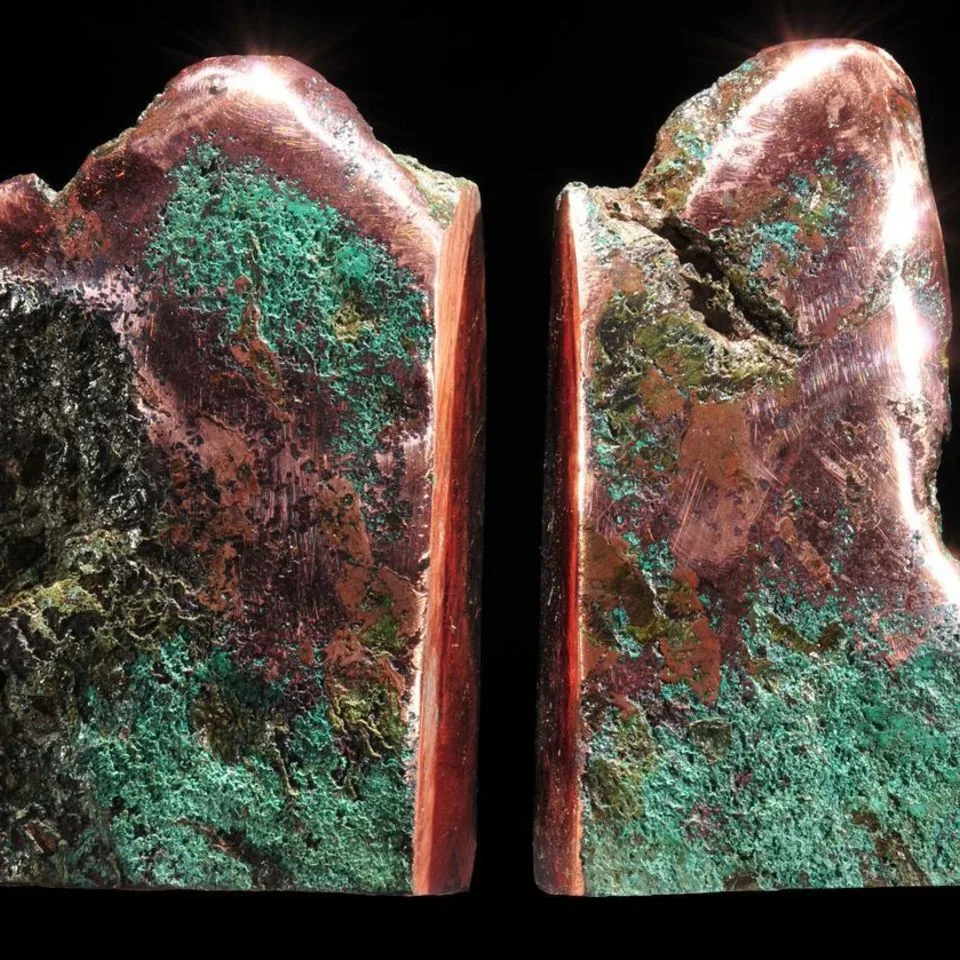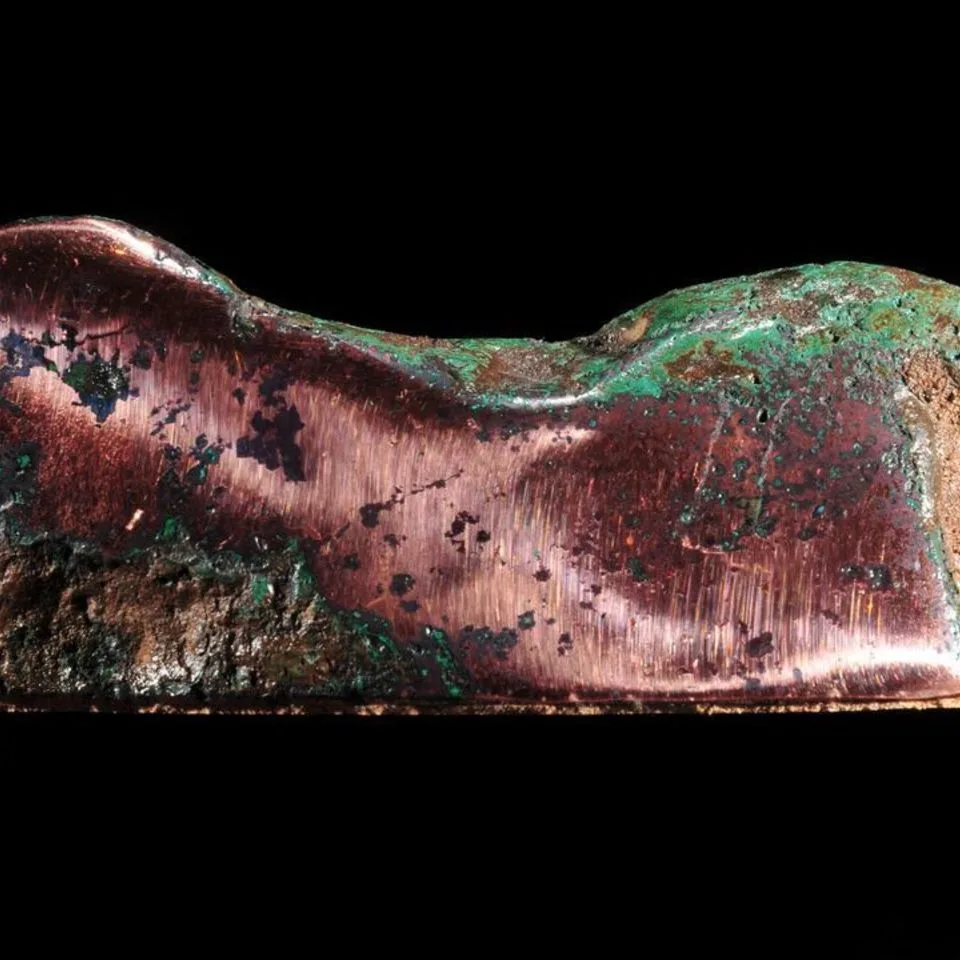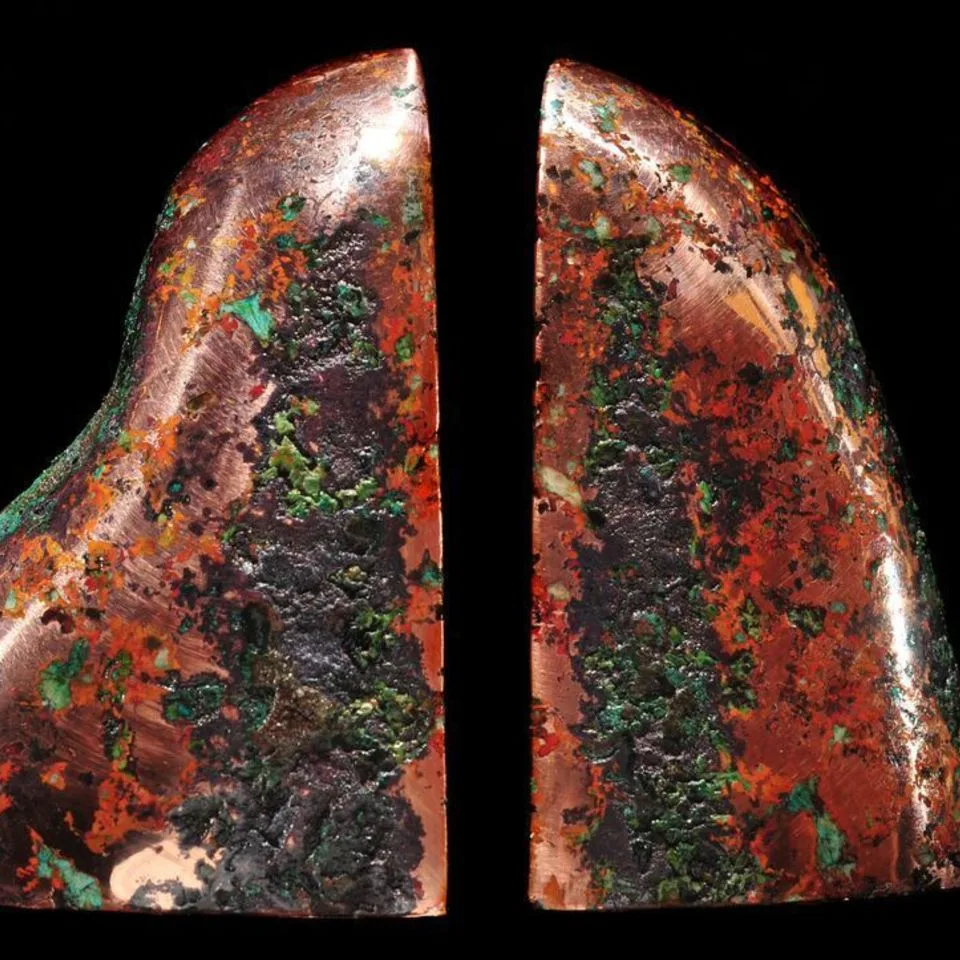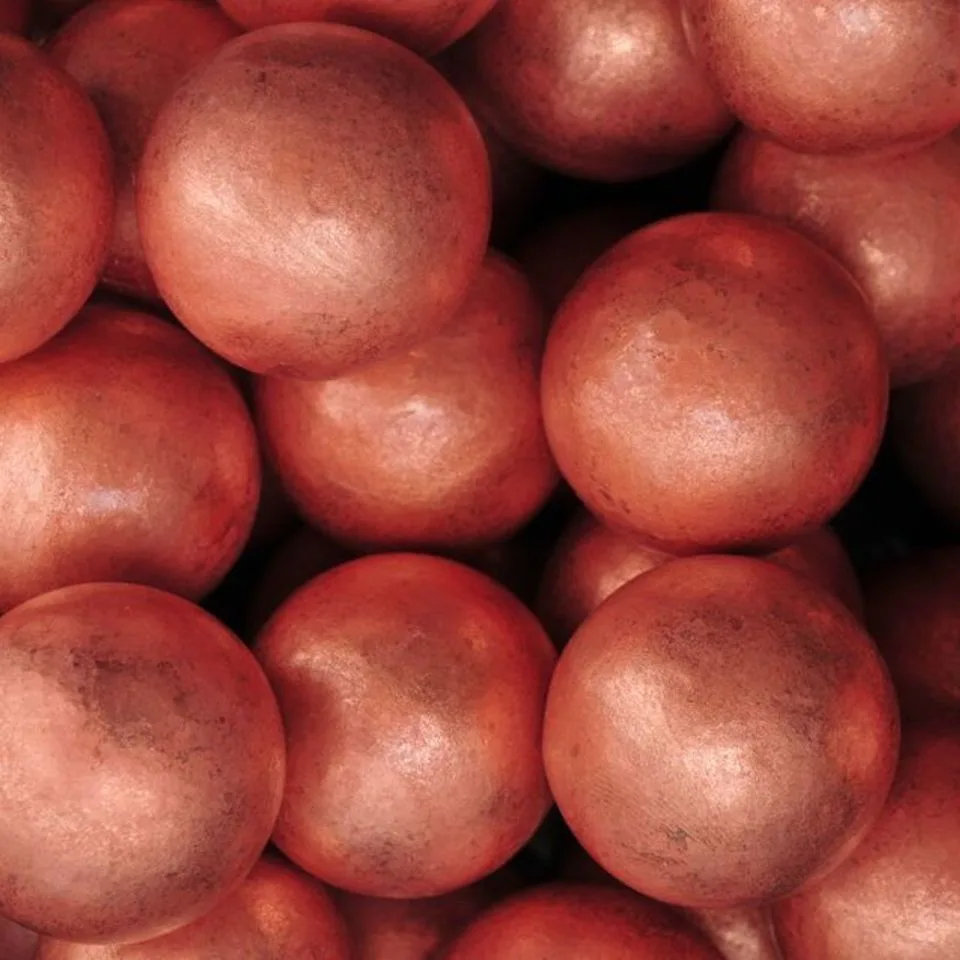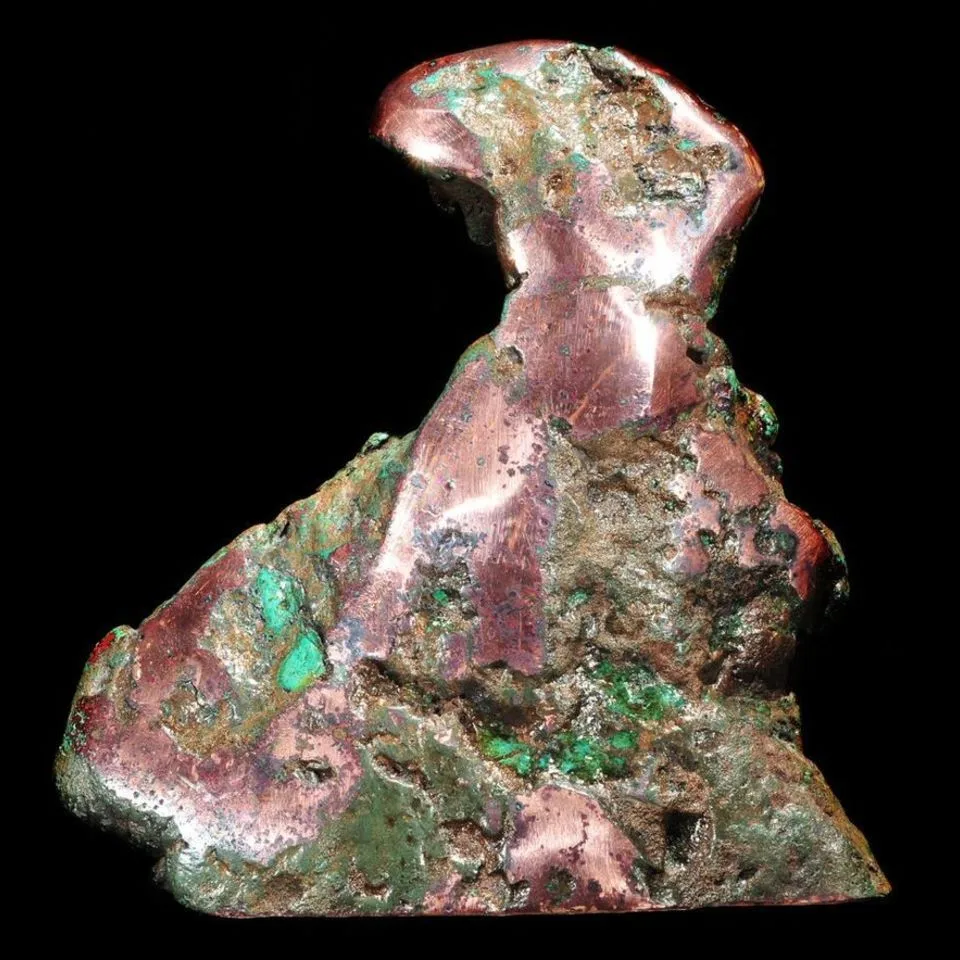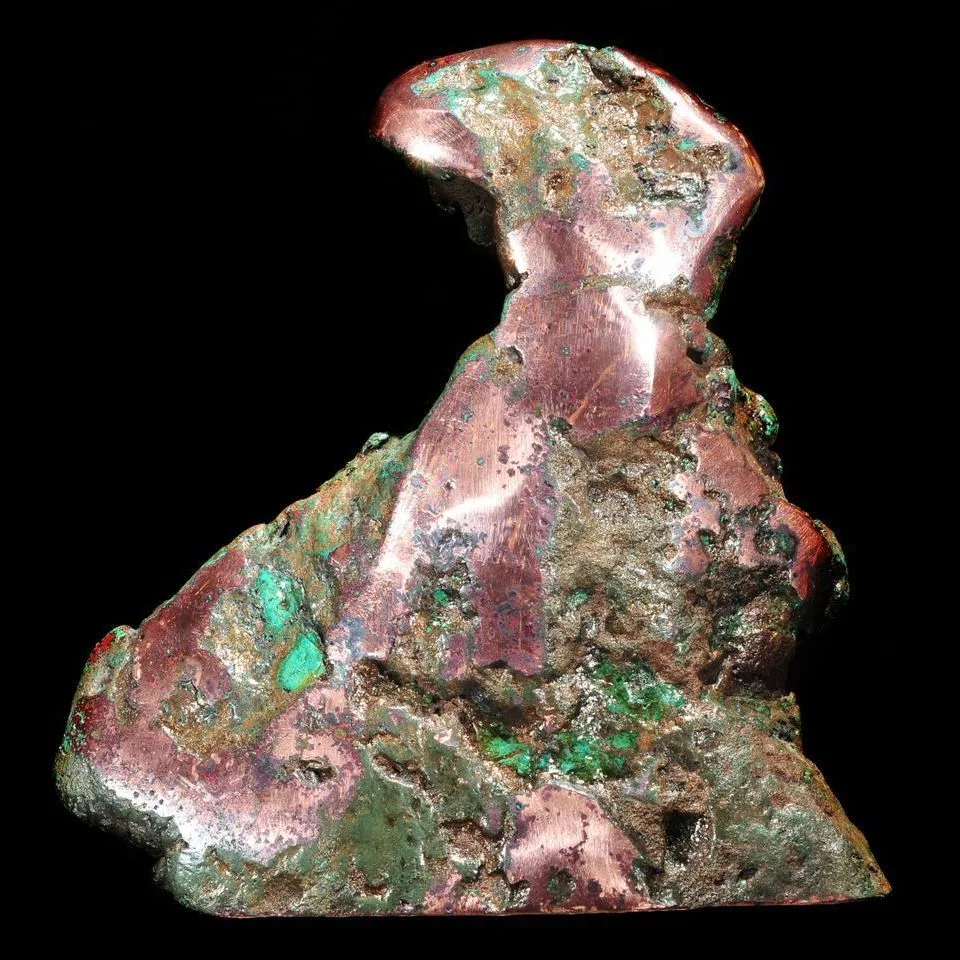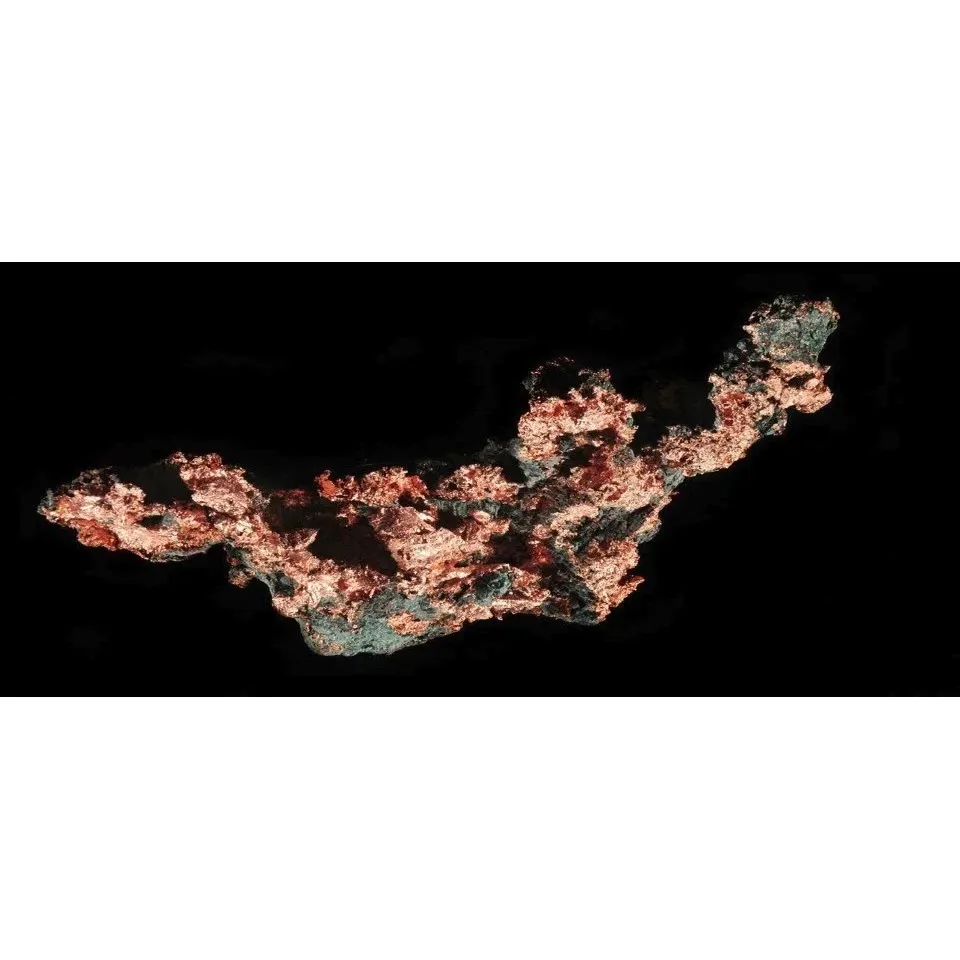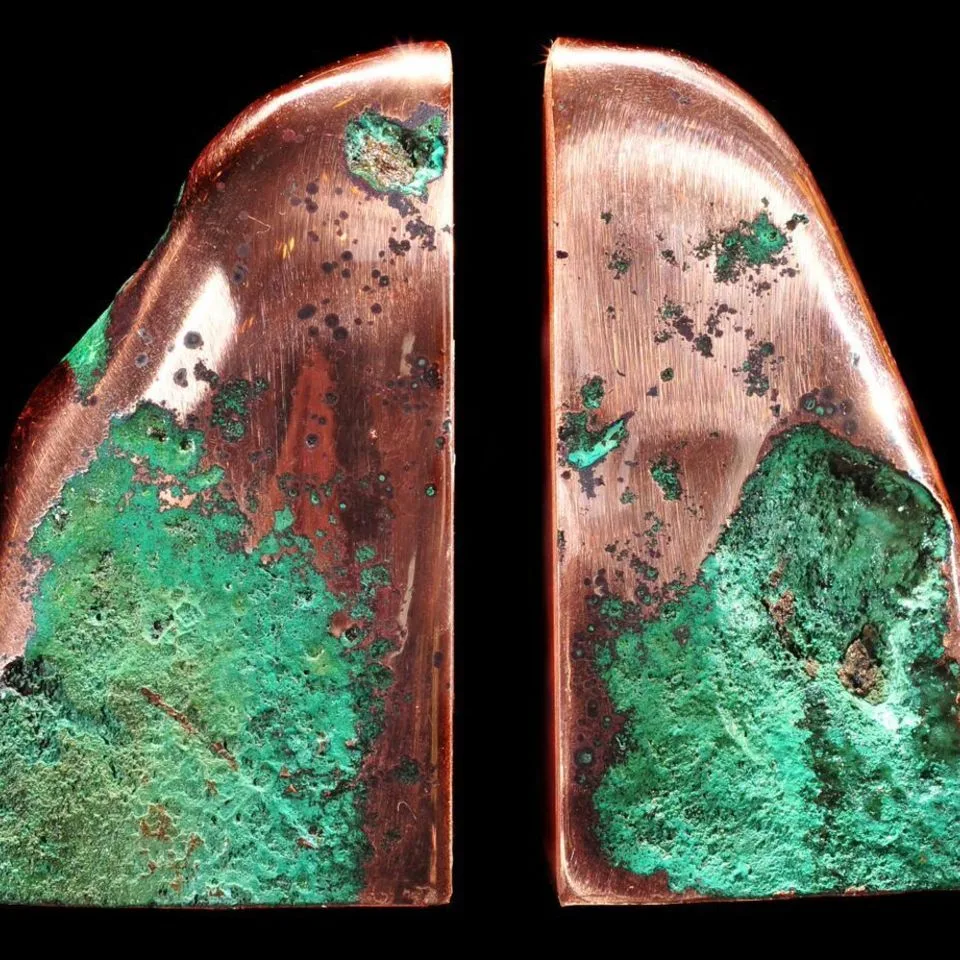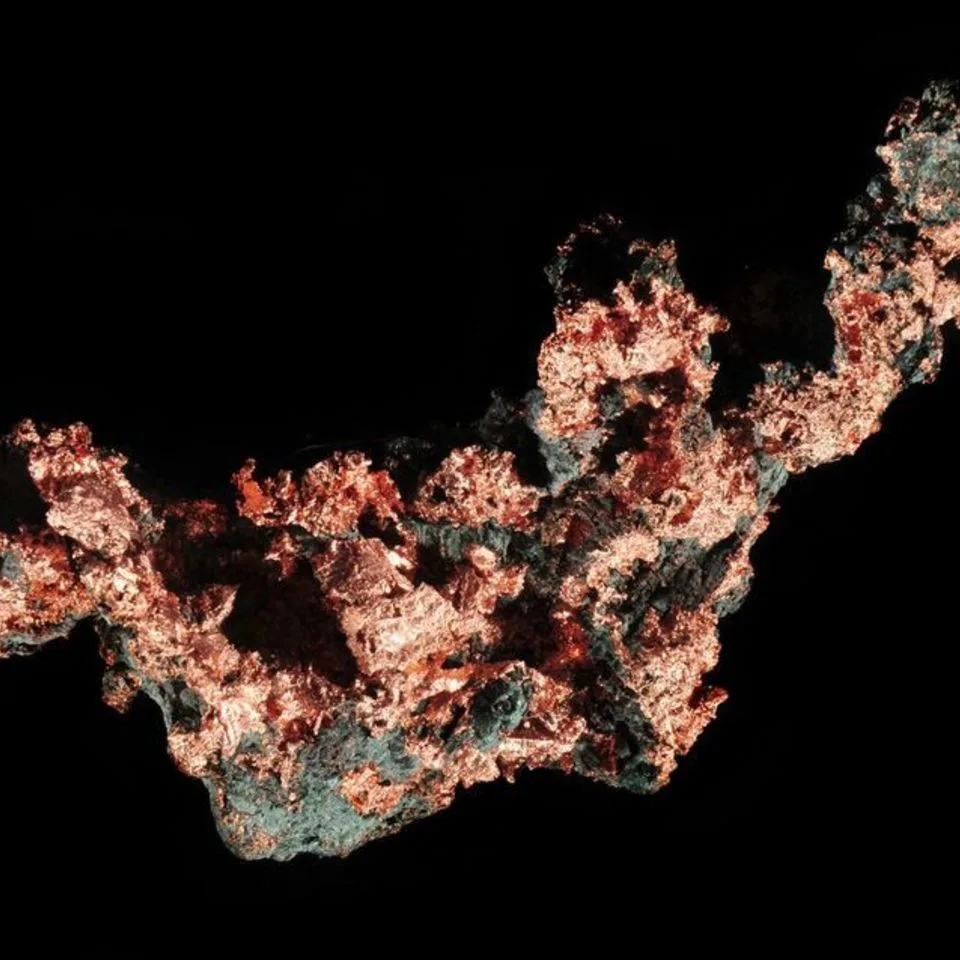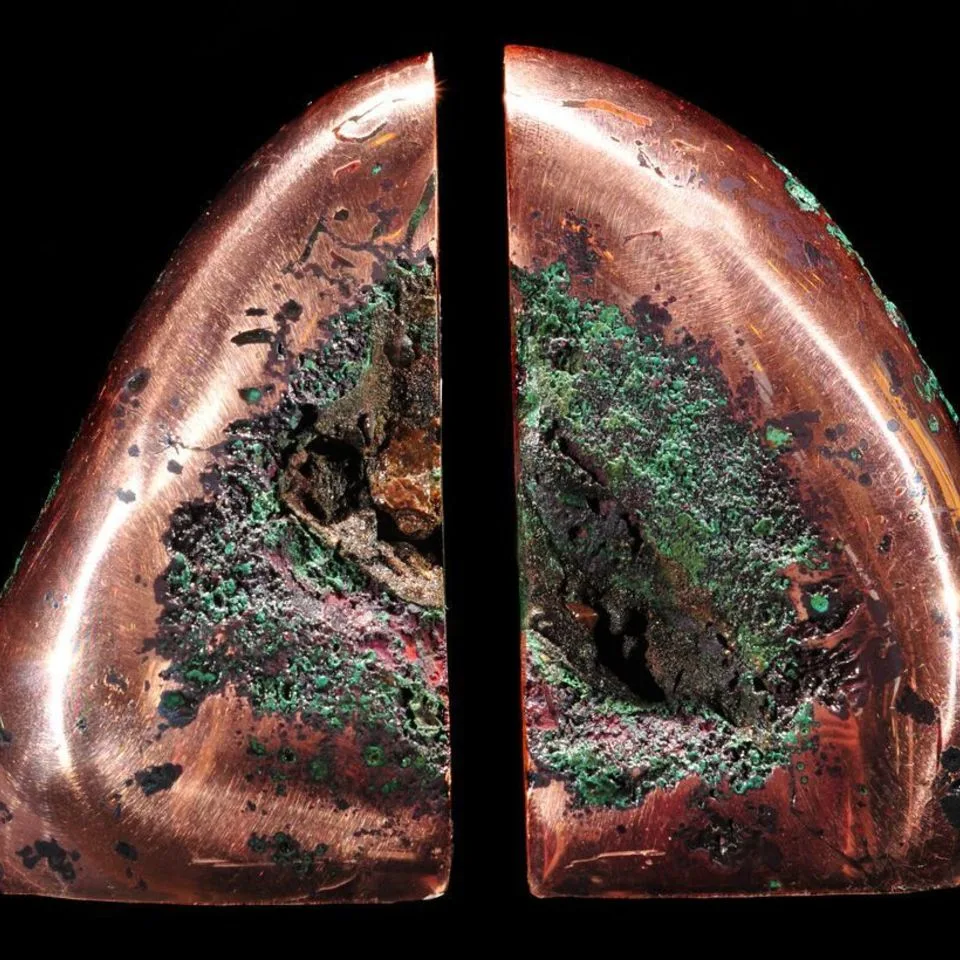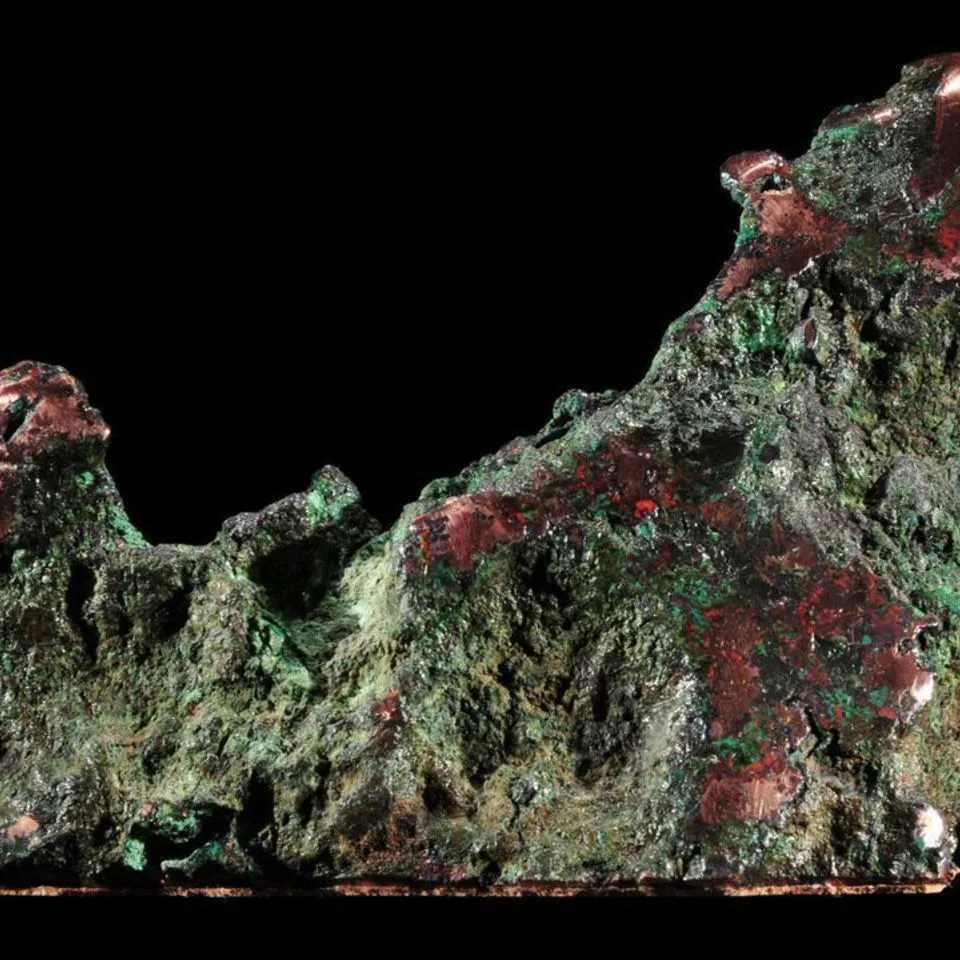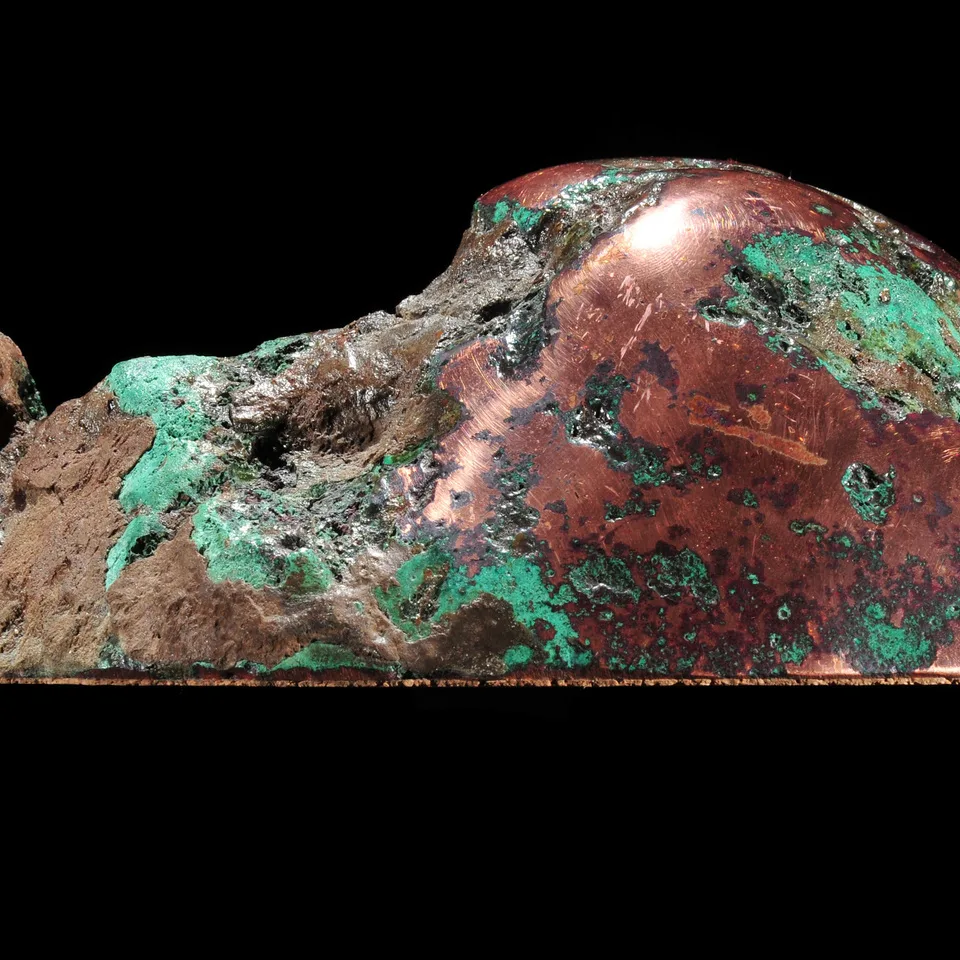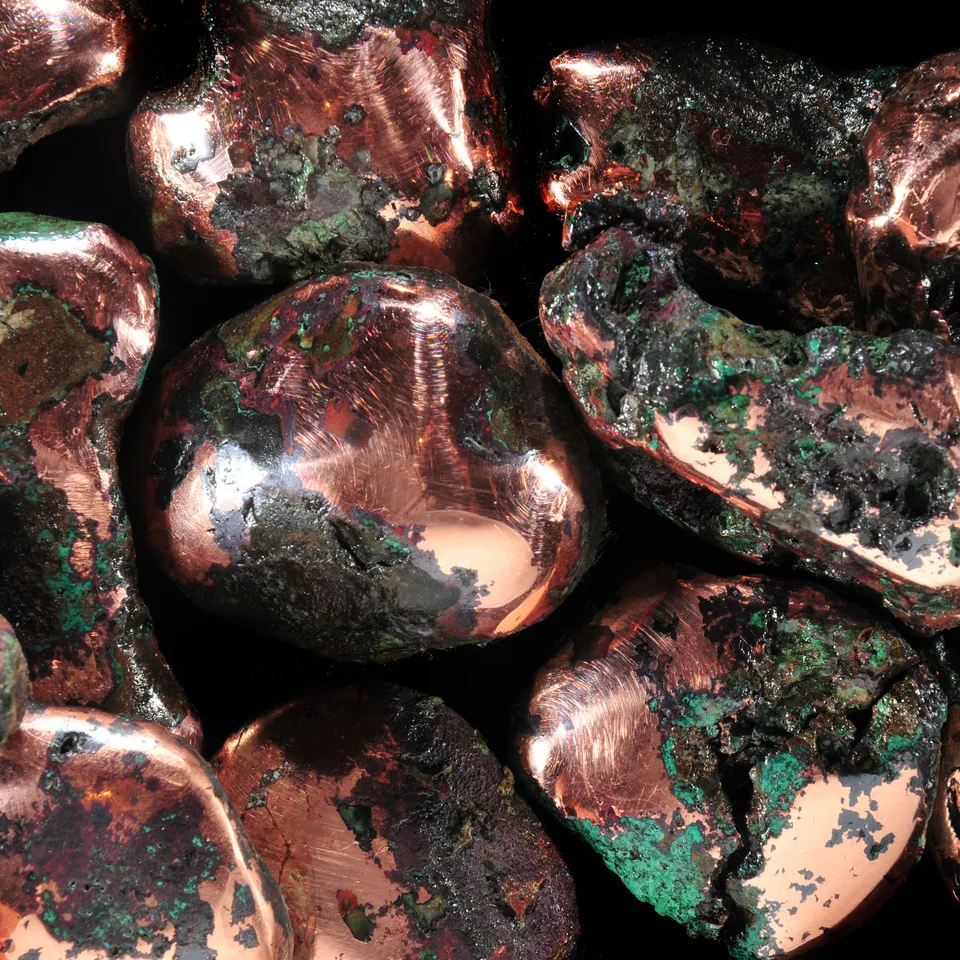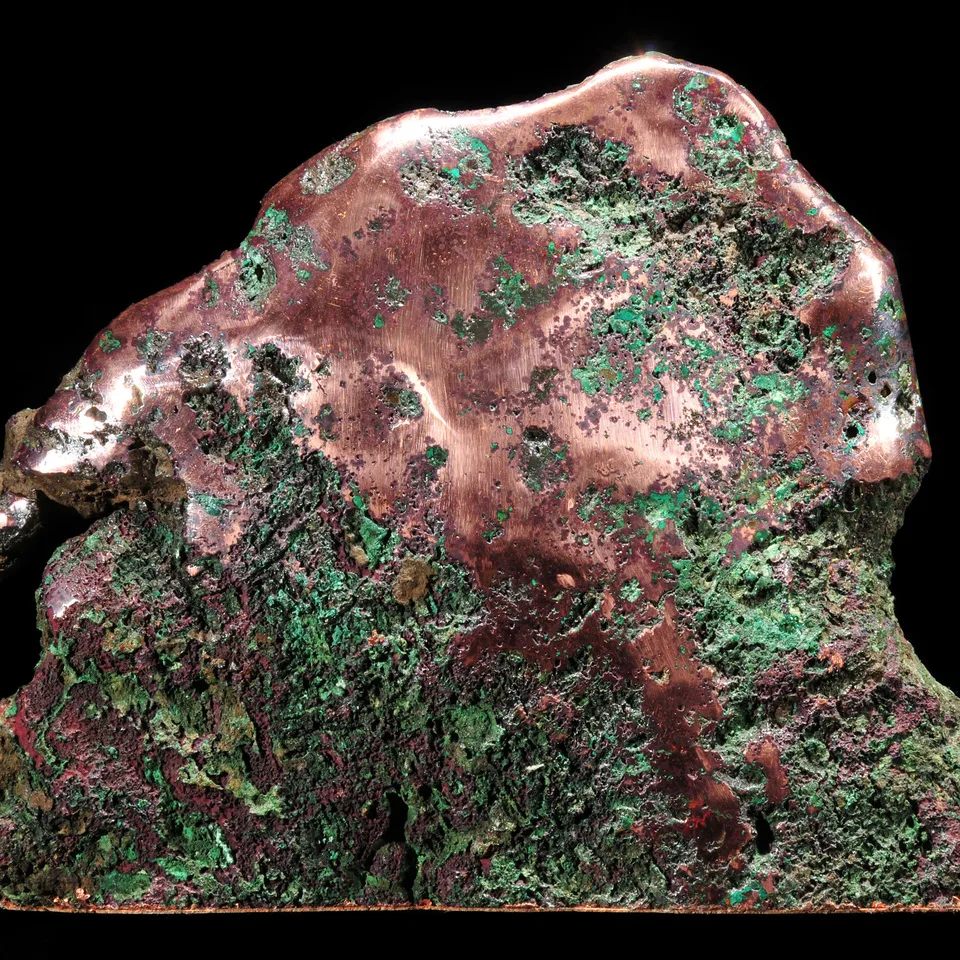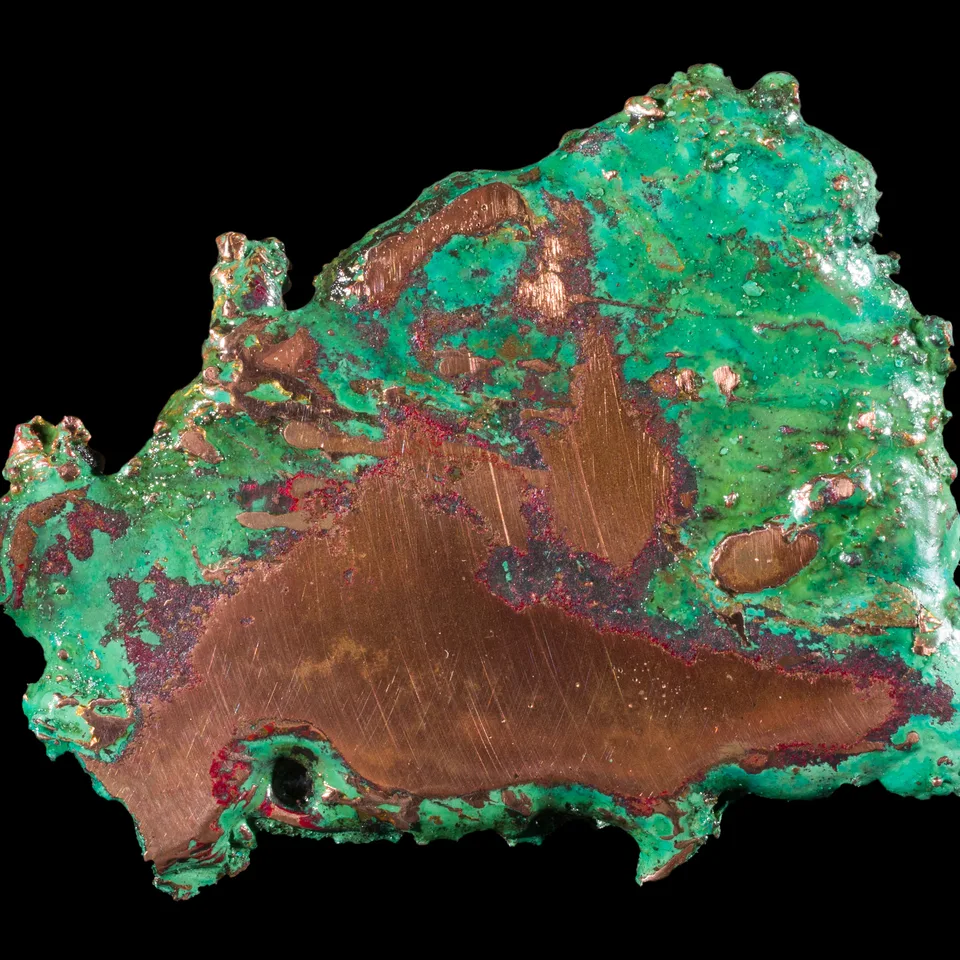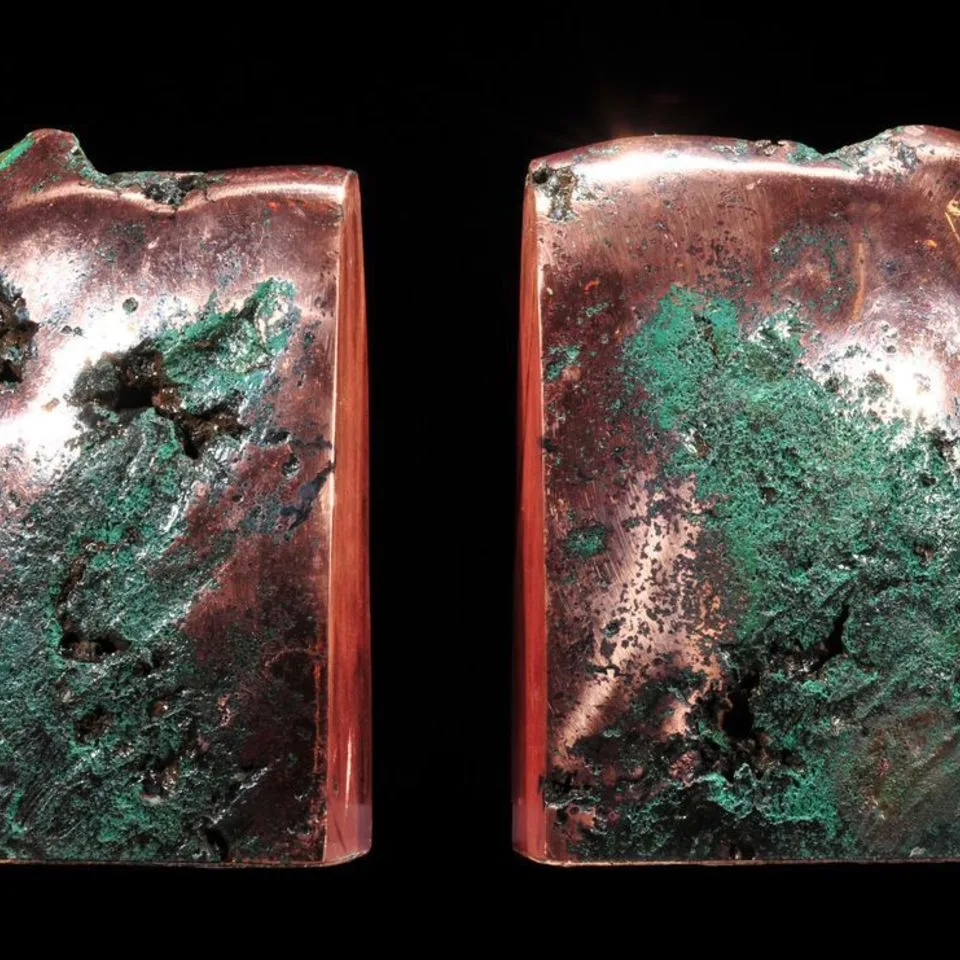Copper
Copper is a chemical element with symbol Cu (from Latin: cuprum) and atomic number 29. It is a soft, malleable and ductile metal with very high thermal and electrical conductivity. A freshly exposed surface of pure copper has a reddish-orange color. It is used as a conductor of heat and electricity, as a building material, and as a constituent of various metal alloys.
The metal and its alloys have been used for thousands of years. In the Roman era, copper was principally mined on Cyprus, the origin of the name of the metal from aes сyprium (metal of Cyprus), later corrupted to сuprum, from which the words copper (English), cuivre (French), Koper (Dutch) and Kupfer (German) are all derived. Its compounds are commonly encountered as copper(II) salts, which often impart blue or green colors to minerals such as azurite, malachite and turquoise and have been widely used historically as pigments. Architectural structures built with copper corrode to give green verdigris (or patina). Decorative art prominently features copper, both by itself and in the form of pigments.
Copper is essential to all living organisms as a trace dietary mineral because it is a key constituent of the respiratory enzyme complex cytochrome c oxidase. In molluscs and crustacea copper is a constituent of the blood pigment hemocyanin, which is replaced by the iron-complexed hemoglobin in fish and other vertebrates. The main areas where copper is found in humans are liver, muscle and bone. Copper compounds are used as bacteriostatic substances, fungicides, and wood preservatives.
The softness of copper partly explains its high electrical conductivity (59.6×106 S/m) and thus also high thermal conductivity, which are the second highest (to silver) among pure metals at room temperature. This is because the resistivity to electron transport in metals at room temperature mostly originates from scattering of electrons on thermal vibrations of the lattice, which are relatively weak for a soft metal.
Copper does not react with water but it does slowly react with atmospheric oxygen to form a layer of brown-black copper oxide which, unlike the rust which forms when iron is exposed to moist air, protects the underlying copper from more extensive corrosion. A green layer of verdigris (copper carbonate) can often be seen on old copper constructions such as the Statue of Liberty. Copper tarnishes when exposed to sulfides, which react with it to form various copper sulfides.
Copper is synthesized in massive stars and is present in the Earth’s crust at a concentration of about 50 parts per million (ppm), where it occurs as native copper or in minerals such as the copper sulfides chalcopyrite and chalcocite, the copper carbonates azurite and malachite, and the copper(I) oxide mineral cuprite. The largest mass of elemental copper discovered weighed 420 tonnes and was found in 1857 on the Keweenaw Peninsula in Michigan, US. Native copper is a polycrystal, with the largest described single crystal measuring 4.4×3.2×3.2 cm.
Copper is commonly used in jewelry, and folklore says that copper bracelets relieve arthritis symptoms. In alternative medicine, some proponents speculate that excess copper absorbed through the skin can treat some ailments, or that the copper somehow creates a magnetic field, treating nearby tissue.
